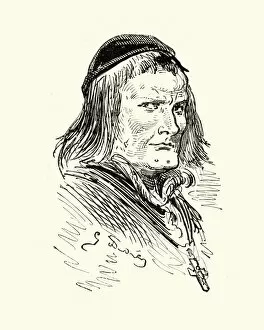Religious Role Collection (page 79)
"Exploring the Religious Role: From Art to Justice" Delving into the realm of religious influence
All Professionally Made to Order for Quick Shipping
"Exploring the Religious Role: From Art to Justice" Delving into the realm of religious influence, we encounter a multitude of captivating portrayals that shed light on the significance and power held by individuals in various religious roles. In William Hogarth's masterpiece, "The Sleeping Congregation, " we witness a congregation lulled into slumber, reminding us of the responsibility bestowed upon religious leaders to awaken and guide their flock. Archbishop Thomas Cranmer stands as an emblematic figure in history, his actions shaping England's spiritual landscape during tumultuous times. Meanwhile, Pope Pius X's portrait commemorates his priestly jubilee, symbolizing the enduring dedication required for those who assume such esteemed positions. "The Ritualistic Prosecutions" engraving serves as a stark reminder that even within religious institutions, conflicts can arise. Yet amidst these challenges emerge figures like Herbert Vaughan, Archbishop of Westminster, receiving the Pallium at Brompton Oratory—an embodiment of resilience and faith. Art continues to play its part in capturing moments frozen in time; friar Hernando De Santiago immortalized on canvas reminds us of devotion through centuries past. Equally mesmerizing is Marie-Terese Antoinette de Cluzel's oil painting—a testament to both beauty and spirituality intertwined. Intriguingly contrasting this artistic representation is Fascist justice personified—Justice perched atop the Tree of Good and Evil—a chilling reminder that religion can be manipulated for sinister purposes. From portraits to tapestries depicting kings or priests like Mother Jeronima de la Fuente or Bishop Johannes von Schleinitz respectively—we are reminded that these figures hold immense authority within their respective realms. Lastly, "The Adoration of The Lamb" engraving transports us back to 1498 when art served as a medium for expressing profound reverence towards divine entities while tapestries woven with mille fleurs honor Bishop Johannes von Schleinitz further.




